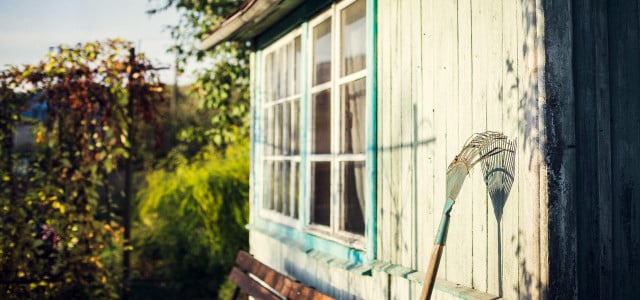Removing moss from your lawn can be done without harming the soil. We will show you how to kill moss in your lawn by using simple household remedies.
Want to know how to kill moss in your lawn? Taking good care of your yard is the best remedy:
- You can scarify the lawn once a year to remove the moss from it. In order to do this, the lawn must be dry and already mowed. Spring and autumn are ideal times for it.
- After scarifying, apply a layer of sand. This will make the soil loosen up.
- Mowing your lawn weekly prevents moss growth. Also make sure that your lawn gets plenty of light. If you have a shady lawn due to large trees, you will have to remove moss regularly.
How to Kill Moss in Your Lawn: Lime and Mulch

You want to remove moss permanently from your lawn? Then make sure to check the pH level of your soil. You can find out whether the soil is too acidic or alkaline with a pH test from the hardware store.
Grass doesn’t grow well on acidic soil, but moss does. A pH value between 5.5 and 6 is ideal. That being said, grass removes nutrients from the soil which causes it to become more acidic over time. Here are a few tricks to prevent that:
- Mulch your lawn: this will return many nutrients to the lawn throughout the year, which will prevent moss in the long term. You also won’t need to use environmentally harmful lawn fertilizer, because mulching has the same effect.
- Liming the lawn: only lime the lawn if the pH value is significantly below 5.5. Lime can get into the groundwater and pollute drinking water, so it’s more of a last resort. To ensure that the lawn can absorb the lime well, you should scarify the lawn beforehand.
- Cover it with compost: humus supplies the soil with new nutrients and is a natural fertilizer for the lawn.
Attention: Hardware stores often recommend iron fertilizer for removing moss – but that’s not a good idea. Not only is iron fertilizer harmful to the health of humans and animals, it also doesn’t work very well. Iron may temporarily kill moss in your lawn, but it also makes the soil more acidic, which creates the ideal conditions for new moss.
Utopia’s tip: Make sure to also try our homemade weed killer from organic ingredients.
Removing Moss on Stones and Tiles



Over time, moss and algae settle on stones, tiles and concrete slabs. A well known remedy uses vinegar to remove moss, but it is an aggressive acid that harms the surface. Vinegar will, however, work quite well on garden furniture: simply use a cloth to wipe moss and dirt off.
Baking soda is a much better choice, as it doesn’t damage sensitive surfaces:
- Mix 1½ tablespoons of baking soda with 2½ gallons of water and spread this mixture on the affected moss areas.
- If the moss is already loosened and completely covered with the baking soda mixture, you will achieve the best results.
- Allow the mixture to work for at least 24 hours before rinsing (– so make sure to choose a sunny day).
- You can use a brush to remove stubborn moss during this 24 hour period.
Moss often grows in between cobble or patio stones. Try filling the gaps with sand as this leaves almost no room for the moss to grow in!
This article has been translated from German by Karen Stankiewicz. You can find the original here: Moos entfernen: So geht es ohne Essig
** Links to retailers marked with ** or underlined orange are partially partner links: If you buy here, you actively support Utopia.org, because we will receive a small part of the sales proceeds. More info.Do you like this post?








